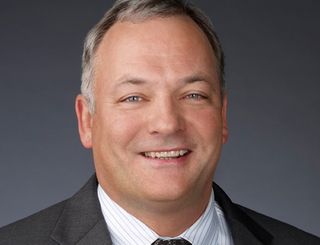No Doubt Who Holds Ball At ‘Inside the NBA’

One of the first things Tim Kiely did when he began producing TNT’s Inside the NBA in 1995 was turn off the prompter.
After an admittedly bad show, longtime host Ernie Johnson threw and shattered his coffee mug in the studio out of frustration. The next morning, sitting on Johnson’s desk, courtesy of Kiely, was a new mug emblazoned with the words, “Postal Worker Needed.”
Five Emmys and nearly two decades later, Kiely and Inside the NBA continue to deliver. Kiely, now 54, had a vision for Inside, which returned Oct. 28 for the start of the 2014-15 NBA season. Teasing, pranks and jokes are just as integral as the analysis. Kiely likens it to needling friends at a sports bar. When Charles Barkley mispronounces a word or Kenny Smith contradicts himself, the nature of the show is not to ignore the gaffes so much as embrace them.
“That’s the heart of the show,” says Kiely, now the VP of production and executive producer at Turner Sports. “We will point out mistakes and make fun of them.”
Johnson says the loose, improvised style of the show might scare other producers. “The show kind of takes its personality from Tim, because he feels comfortable having it be a spontaneous, off-the-cuff, unrehearsed show,” Johnson says.
Kiely implemented two rules for the show. Rule 1: Never look at the cameras.
After stints at WTAE-TV Pittsburgh and ESPN, Kiely landed at Turner in 1995 with the freedom to experiment. “For him, no approach is out of bounds,” says Craig Barry, senior VP of production and executive creative director at Turner Sports. “No idea is a bad idea. The execution of the show is a direct reflection of him.”
Kiely drew inspiration from freeform talk shows The Sports Writers on TV and The McLaughlin Group in addition to his experience playing football in high school and in college at Columbia. “Having been an athlete, I wanted to recreate what the locker room was like without curse words,” he says.
Kiely, who also produces Turner’s studio shows for the MLB Playoffs, NCAA Men’s Basketball Tournament, the PGA Championships and NASCAR, has been around professional athletes his whole life. His father did PR for the NFL’s Pittsburgh Steelers. As a 14-year-old ball boy, Kiely was handed a list of the players being cut each Monday and had to tell each of them to report to Coach Noll’s office. Kiely saw first-hand that pro athletes were just regular people with feelings.
So in the studio, Kiely strives to put the athletes at ease. He recognizes how they see cameras: as a red flag, a signal to be careful with what they say or do. He wants his analysts to be comfortable, not worried about where to look.
“I want them to talk to each other,” Kiely says. “Once you look at cameras, you lose the conversation.”
“The guys point-blank trust him emphatically,” Barry says. “If he says it’ll be good TV this way or it’ll work, they’ll do it. They want to do it.”
If the athletes seem to go off-script, it’s because there isn’t one — thanks to rule 2: No on-air analysts in the rundown meetings. “I want them un-rehearsed and spontaneous,” Kiely says.
Of course, there’s also another reason for that. “We spend more time in those meetings figuring out how we can torture those guys than the X’s and O’s of basketball,” Kiely admits.
There was the time they shut Barkley out of the studio by turning it into a champions club at halftime (since Barkley famously never won an NBA title). And the time when Smith, returning from paternity leave, competed with Barkley in an impromptu diaper changing contest.
The pranks add to the familial atmosphere. “It’s just like the four of us are sitting in the living room,” Johnson says.
But make no mistake — in this living room, Kiely controls the remote.
“When you ride a horse, the horse can tell if he’s being ridden or if he’s in charge,” Johnson says. “The horse never has any doubt that Tim’s in charge.”
Broadcasting & Cable Newsletter
The smarter way to stay on top of broadcasting and cable industry. Sign up below
